

After 25 years of service, Jonathan Carlson retired June 30, 2009 (although you’ll still see him around the department for a while as he finishes up several things on a part time basis). Over the years, Jon has made many important contributions to the undergraduate /graduate virology teaching and research programs of the department. Jon received his BS in Chemistry right here at CSU and did his PhD work in Biophysical Chemistry at UC-Berkeley. After a postdoc at the Univ of Colorado Health Sciences Center at Denver and a 3 year stint at a biotech company, Jon joined the Department in 1984 as an Assistant Professor. He rapidly rose through the ranks and was appointed Professor in 1995. From 2001-2004, Jon served as the Director of the Infectious Disease Program of Research and Scholarly Excellence here at CSU. Jon’s research over the years has been in the area of arbovirology and mosquito vector biology. He’s probably best known for his pioneering work on densoviruses. Jon’s published nearly 100 journal articles which have been cited well over 1800 times. His scientific and teaching abilities, as well as his hearty laugh, will be greatly missed by the faculty staff and students of MIP.
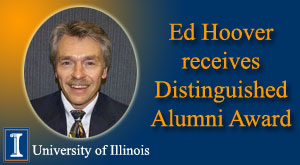
Congratulations to Ed Hoover for receiving the University of Illinois College of Veterinary Medicine 2009 Dr. Erwin Small Distinguished Alumni Award. The awards were presented on September 10, 2009, during the annual Fall Conference for Veterinarians.
Dr. Brennan's Work Highlighted in JBC ‘Classics’
 Congratulations to Pat Brennan whose postdoctoral work on Mycobacterial Glycophosphoinositides at the University of California-Berkeley in the laboratory of Dr. Clinton Ballou was recently highlighted in the ‘Classics’ section of the Journal of Biological Chemistry. Check out the article at the JBC website or click here.
Congratulations to Pat Brennan whose postdoctoral work on Mycobacterial Glycophosphoinositides at the University of California-Berkeley in the laboratory of Dr. Clinton Ballou was recently highlighted in the ‘Classics’ section of the Journal of Biological Chemistry. Check out the article at the JBC website or click here.

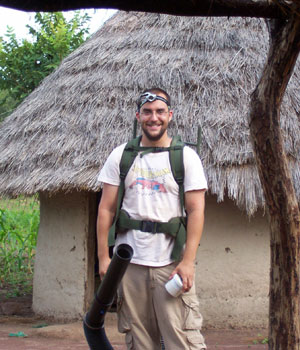
Kevin wearing a backpack mosquito aspirator transferring mosquitoes from an aspirator cup while in a village in Southeastern Senegal.
Kevin Kobylinski is currently working on his doctoral thesis project in Southeastern Senegal under the tutelage of Drs. Brian Foy and Massamba Sylla (in Africa). His NIH and the Bill and Melinda Gates Foundation funded project is focused on determining whether ivermectin given to villagers could also be used to control malaria. Interestingly, he has determined that quantities of ivermectin circulating in a person's bloodstream after pill ingestion are enough to have a lethal effect on the mosquitoes that transmit malaria. After spending 3 weeks in the Kedougou region in August of 2008, Kevin is spending the entire rainy season there (from June-November) this year. Kevin spends his days driving around on rutted roads, collecting mosquitoes from the huts of villagers, sweating over a microscope, dissecting mosquitoes, and eating spicy thiebou djeune. He especially loves eating the tender goat and drinking the unparalleled Flag beer in Southeastern Senegal and, as such, he has allegedly sworn off Kansas City BBQ and Belgium beers forever.
Read the most recent email from Kevin.
Check out photos from Senegal.

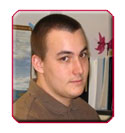 Congratulations to MIP Grad Student Kevin Sokoloski for being one of 27 graduate students and postdocs around the country to complete the ASM’s Kadner Institute Program in mid July. The Kadner Institute is sponsored by the American Society for Microbiology is a 4.5 day program in which selected applicants are provide the opportunity to enhance their skills in grant
Congratulations to MIP Grad Student Kevin Sokoloski for being one of 27 graduate students and postdocs around the country to complete the ASM’s Kadner Institute Program in mid July. The Kadner Institute is sponsored by the American Society for Microbiology is a 4.5 day program in which selected applicants are provide the opportunity to enhance their skills in grant  writing, scientific presentations, communication, and ethics in support of their careers. View a copy of the press release.
writing, scientific presentations, communication, and ethics in support of their careers. View a copy of the press release.
In the News...
Gerald Callahan's book, "Between XX and XY: Intersexuality and the Myth of the Two Sexes" was recently cited on the ESPN.com news article entitled, "Caster Semenya is being treated unfairly".
Ian Orme's opinion article entitled, "British paper: Health system better than U.S.", appeared in the September 3 edition of the Coloradoan.

Put down Dan Brown's "The Lost Symbol" and check out this mystery right in our own backyard...
Implications of high level pseudogene transcription in Mycobacterium leprae
Diana Williams, Richard Slayden, Amol Amin, Alejandra Martinez, Tana Pittman, Alex Mira, Anirban Mitra, Valakunja Nagaraja, Norman Morrison, Milton Moraes, Thomas Gillis
BMC Genomics 2009, 10:397
Our Pub of the month for September is a truly world-wide collaborative effort involving research groups from Louisiana, Spain, India, Brazil, CSU and exotic Baltimore. These research groups ganged up to do a global analysis of all of the RNAs made by the agent that causes Leprosy (aka Hansen’s Disease), Mycobacterium leprae, using microarray analysis.
What they uncovered was that M. leprae clearly has a lot of ‘junk in the trunk’ so to speak. 41% of the genes in M. leprae are pseudogenes – non-functional ‘junk’ genes that are considered to be largely evolutionary remnants of inactivated open reading frames. This is the largest percentage of pseudogenes of any bacterial genome sequenced to date. Ric, Amol and the rest of the gang discovered that M. leprae grown in the footpads of nude mice (a model for lepromatous (aka bad) leprosy) makes 1353 mRNAs that could be detected on the microarrays. That means half of M. leprae’s 2747 genes/pseudogenes are transcribed. Interestingly, a whopping 43% of its 1,133 pseudogenes were actively transcribed. How in the heck are all of these ‘junk’ transcripts being made? Well at least two forces are clearly at play. First, many pseudogene mRNAs are likely the product of read-through transcription from other genes. Only 27% of protein-encoding M. leprae genes possess intrinsic stem loop terminator structures and a fifth of the pseudogenes are located around known gene clusters. Second, ~16% of pseudogenes appear to possess a promoter-like region, indicating that they are independently transcribed. OK, now that we have that in perspective, the little question of why M. leprae bothers to make this junk needs to be addressed. Based on sequence analyses, there is very little evidence to suggest that any of the pseudogene transcripts that are made get translated into protein. So why in the world M. leprae bothers to make 486 pseudogene mRNAs remains a fascinating question.
So why did we pick this article as our highly covet MIPub of the Month? First, it’s a nice bit of cutting-edge ‘transcriptomics’ that in conjunction with the work being done by a group from the National Institute for Infectious Diseases in Japan on M. leprae sets a strong foundation for understanding the molecular details of this understudied pathogen. Second, its fascinating to speculate why M. leprae hasn’t behaved like most bacteria and deleted the vast majority of pseudogene ‘junk’ from its genome. Perhaps this has to do with the specialized niche of slow intracellular growth of the organism. Alternatively, maybe the pseudogenes aren’t really junk. Rather than being translated into proteins, wouldn’t it be cool if these non-coding transcripts actually functioned as RNA molecules that contributed to the regulation of gene expression and/or directly to the metabolism of M. leprae? Could one bacteria’s junk be another organism’s treasure? It’ll be interesting to see if there are any conserved patterns to pseudogene expression in the new M. leprae strain that was recently sequenced that may give us clues to this interesting evolutionary and molecular Dan Brown-esque mystery. Finally, the paper serves as a nice reminder of the scientific work of our good friend Amol Amin who tragically passed away in March 2008.
 MIP Publications
Late August - Early September 2009
MIP Publications
Late August - Early September 2009
- Calisher CH. Swine flu. Croat Med J. 2009 Aug;50(4):412-5.
- Calisher CH, Peters CJ, Douglass RJ, Kuenzi AJ. Hantaviral infections of rodents: possible scenarios. Arch Virol. 2009;154(8):1195-7.
- Carlson BA, Nightingale KK, Mason GL, Ruby JR, Choat WT, Loneragan GH, Smith GC, Sofos JN, Belk KE. Escherichia coli O157:H7 strains that persist in feedlot cattle are genetically related and demonstrate an enhanced ability to adhere to intestinal epithelial cells. Appl Environ Microbiol. 2009 Sep;75(18):5927-37.
- Jaenson TG, Eisen L, Comstedt P, Mejlon HA, Lindgren E, Bergström S, Olsen B. Risk indicators for the tick Ixodes ricinus and Borrelia burgdorferi sensu lato in Sweden. Med Vet Entomol. 2009 Sep;23(3):226-37.
- Jennelle CS, Samuel MD, Nolden CA, Keane DP, Barr DJ, Johnson C, Vanderloo JP, Aiken JM, Hamir AN, Hoover EA. Surveillance for transmissible spongiform encephalopathy in scavengers of white-tailed deer carcasses in the chronic wasting disease area of Wisconsin. J Toxicol Environ Health A. 2009;72(17):1018-24.
- Jittawuttipoka T, Buranajitpakorn S, Fuangthong M, Schweizer HP, Vattanaviboon P, Mongkolsuk S. Mini-Tn7 vectors as genetic tools for gene cloning at a single copy number in an industrially important and phytopathogenic bacteria, Xanthomonas spp. FEMS Microbiol Lett. 2009 Sep;298(1):111-7.
- Kaur D, Guerin ME, Skovierová H, Brennan PJ, Jackson M. Chapter 2 Biogenesis of the Cell Wall and Other Glycoconjugates of Mycobacterium tuberculosis. Adv Appl Microbiol. 2009;69:23-78.
- Mildner A, Mack M, Schmidt H, Brück W, Djukic M, Zabel MD, Hille A, Priller J, Prinz M. CCR2+Ly-6Chi monocytes are crucial for the effector phase of autoimmunity in the central nervous system. Brain. 2009 Sep;132(Pt 9):2487-500.
- Rosas-Taraco AG, Higgins DM, Sánchez-Campillo J, Lee EJ, Orme IM, González-Juarrero M. Intrapulmonary delivery of XCL1-targeting small interfering RNA in mice chronically infected with Mycobacterium tuberculosis. Am J Respir Cell Mol Biol. 2009 Aug;41(2):136-45.
- Sakamuri RM, Kimura M, Li W, Kim HC, Lee H, Kiran MD, Black WC 4th, Balagon M, Gelber R, Cho SN, Brennan PJ, Vissa V.Population-based molecular epidemiology of leprosy in Cebu, Philippines.J Clin Microbiol. 2009 Sep;47(9):2844-54.
- Sokoloski KJ, Chaskey EL, Wilusz J. Virus-mediated mRNA decay by hyperadenylation. Genome Biol. 2009 Aug 11;10(8):234.
- Svetlíková Z, Skovierová H, Niederweis M, Gaillard JL, McDonnell G, Jackson M. Role of porins in the susceptibility of Mycobacterium smegmatis and Mycobacterium chelonae to aldehyde-based disinfectants and drugs. Antimicrob Agents Chemother. 2009 Sep;53(9):4015-8.
- Williams DL, Slayden RA, Amin A, Martinez AN, Pittman TL, Mira A, Mitra A, Nagaraja V, Morrison N, Moraes M, Gillis TP. Implications of high level pseudogene transcription in Mycobacterium leprae. BMC Genomics. 2009 Aug 25;10(1):397.

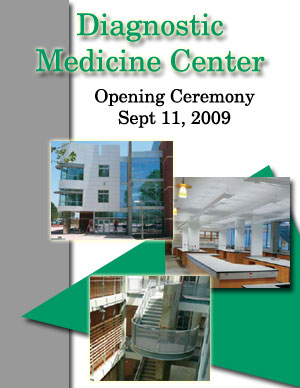
Check out photos from the event!

 Wondering how you’re going to celebrate the summer solstice 5 years from now? How about networking and partying with ~1,500 virologists from around the globe! We are pleased to announce that the 33rd Annual Meeting of the American Society for Virology has been scheduled to take place June 21-25, 2014 right here on the CSU campus! Congratulations to Jeff Wilusz (lead organizer), co-organizers Sandy Quackenbush, Carol Blair, Ken Olson and CSU Conference Services for putting together the successful proposal.
Wondering how you’re going to celebrate the summer solstice 5 years from now? How about networking and partying with ~1,500 virologists from around the globe! We are pleased to announce that the 33rd Annual Meeting of the American Society for Virology has been scheduled to take place June 21-25, 2014 right here on the CSU campus! Congratulations to Jeff Wilusz (lead organizer), co-organizers Sandy Quackenbush, Carol Blair, Ken Olson and CSU Conference Services for putting together the successful proposal.
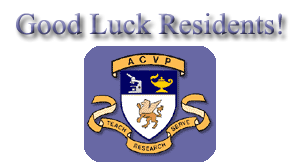
The Annual American College of Veterinary Pathologist (ACVP) Board Exam will be held September 22-24 on the campus of Iowa State University in scenic Ames, IA. Best of luck to Colleen Duncan, Mona Bera, David Gardiner, Greg Wilkerson, Marie Legare, Jamie Bush, Stu VandeVenter, Amy Miller, Wendy Sprague and Majorie Williams!
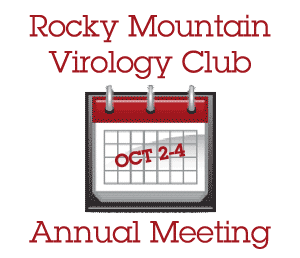
This year's meeting of the Rocky Mountain Virology Club will be held at Pingree Park on Oct 2-4 (Friday evening to Sunday noon). Go to the Rocky Mtn Virology Club website to see highlights of previous meetings. Registration information will be forthcoming.

Welcome back students!
The Microbiology Student Organization (MSO) has coordinated a Friday Afternoon Club (FAC) for Friday, Sept. 18 at Coopersmiths from 7-10 PM. For all of who have just joined the program, MSO puts on an FAC early in the fall semester so that all of the students in the department can get together to hang out, chat and eat some yummy food.
As always the food and non-alcoholic beverages are on MSO's tab!
Significant others/family are welcome.
Hope to see you there!
~Britta, Nicole & Sarah
We've sure come a long way from Maxam-Gilbert Chemical DNA Sequencing...

We are very excited to report that CSU has recently purchased an Applied Biosystems SOLiD next-generation sequencing instrument. Next generation sequencing is setting a new standard in genomic-based investigations. This technology enables massively parallel sequencing of clonally amplified nucleic acid fragments. With its ultra high throughput and accuracy, next generation sequencers not only out perform traditional sequencing, but also enables many advanced and emerging applications. The system is slide-based and can run two slides simultaneously with each slide being capable of generating greater than 10 Gb of mappable sequence per run. Recent barcoding technology, comprised of a 5 base moiety within the primer portion allows up to 256 samples to be multiplexed on the instrument simultaneously.
The instrument will be housed in the Genomics Proteomics Core of the RCE under the direction of Ric Slayden. So if you’re looking to sequence an organism’s genome (in an afternoon), characterize gene expression patterns at a depth you never thought possible, analyze microRNAs, SNPs, methylation states, etc., you definitely want to check this puppy out.

The Fall meeting of the Rocky Mountain Chapter of the American Society for Microbiology will be held on Saturday, November 14th at the UCD Anschutz Medical Campus in Aurora. Randy Cohrs and Adela Cota-Gomez are hosting the festivities. Information on registration will be available shortly.

Svetlana Zakharova, MIP postdoctoral alumnus of the Carlson and Wilusz labs, was recently sent an email requesting information for a Training Grant that MIP is currently putting together. Her ‘timely’ response to this request appears below:
From: Svetlana Zakharova
Sent: Thursday, August 27, 2009 5:59 AM
To: Rogers,Susan
Subject: Re: training grant proposal
Dear Susan,
I did receive your e-mail. Thank you. I have all you need. At the moment I am in labour delivering a child in the hospital and will be answering your mail very soon.
Svetlana
Congratulations Sveta on the birth of your new bouncing baby boy!

 MIP Movers Staying Alive
MIP Movers Staying Alive
Fall 2009
The Staying Alive program at CSU is starting up again, and Barb Andre, Staying Alive Coordintor for the MIP Dept, invites all to join in! Staying Alive is a program for CSU faculty, staff, and student employees that encourages exercise and movement. This is a self-monitoring program that allows you to enter your exercise (minutes or steps) in a friendly competition with other CSU departments. There is also a chance to win prizes at the end of this 10-week program.
See the details of the program at: stayingalive.colostate.edu; and click the "sign up" button at the top to join the MIP Movers team!
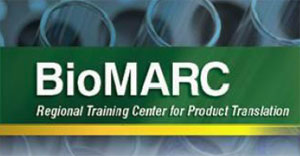
Biomarc Regional Training Center for Product Translation is offering it's Navigating Clinical Trials Course at the Medical Center of the Rockies on Wednesday, October 7. The course will be held in the Main Conference Room, West Entrance, and costs $45/student, $75/faculty, $100/Industry Professional.
 Best Wishes Kerry!
Best Wishes Kerry!
Kerry Grohman, Accounting Tech for MIP, worked her last day with MIP on August 31. We will miss her, but wish her all the best in her future endeavors.

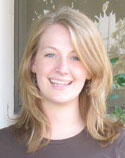 | Leah Heyboer is a new student administrative assistant working at both the Microbiology and Pathology front desks. She is a junior Equine Science with a minor in Business. Originally from Littleton, Colorado (Southwest of Denver), Leah enjoys spending time with horses, camping, hiking, and anything relating to the outdoors. She has a passion for animals of all kinds, but especially enjoy learning about wildlife conservation efforts throughout the world. |
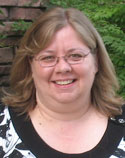 | Karen Hofmaier is the new face at the Microbiology front desk as an Administrative Assistant II. Karen is new to CSU and a native of Wisconsin. She relocated to Fort Collins a year and a half ago. She enjoys reading, getting to know the area, gardening, and spending time with family and friends. |
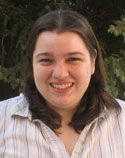 | Corrine Lindstadt is a new student administrative assistant working at both the Microbiology and Pathology front desks. She is a Junior majoring in Social Studies Education with plans to teach at the high school level after graduation. Originally from Long Island, New York, Corinne has lived in Colorado for the last four years. |

“The shortest distance between two points is under construction. ”
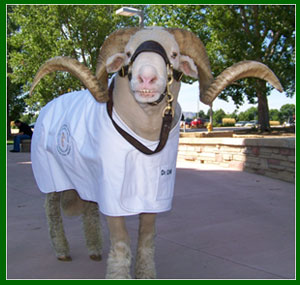
Alternative Captions:
1. "Yo grad students - I have my sheepskin - when you planning on getting yours?"
2. "Call CSUPD - I've been fleeced!"
3. The lab coat probably doesn't, but does Cam shrink when it rains?
4. "I didn't know that Dolly died a few years ago. Who did the ewelogy?"
5. Submit your own.

- NIAID Interim R01 payline for FY2010 set at the (ugh) 6th percentile
NIAID has set its interim R01 payline at an ungodly low 6 percentile. The reason for this historically low payline are uncertainties regarding the 2010 NIAID appropriation along with the surge in R01 applications expected to be re-submitted ARRA Challenge Grants. Note, however, that NIAID intends to fund the same number of grants in FY 2010 as it did in FY 2009. The official advice from NIAID is: If your application ranks at 8 percentile or lower, you may want to wait to see if it falls within the payline later in the year. Keep in mind that NIAID and NIH Bridge award funds are also potentially available to help you out. If the percentile is higher than 8, you should probably revise and resubmit since there is no guarantee that the budget picture will be any brighter in FY 2011. Remember though – that its now two strikes and you’re out…..
- Smaller Paylines and Smaller Grant Applications – The new 12 page R01 format will begin with Cycle 1 in 2010
Please note that even if your grant application is a resubmission, if its going in cor a cycle 1 deadline in 2010 it will have to be re-written in the new 12-page format.
- Important: Postdocs now need to obtain an eRA Commons ID
All postdocs with a measurable effort on an NIH grant must now be registered with eRA Commons. For more info, check out the posted Notice webpage.
- PHS 2590 Progress Reports have been revised
Effective October 1, you will need to use the new revised PHS 2590 forms for your Progress Reports. One key change is now a new ‘All Personnel’ reporting requirement. For more info, check out Notice webpage

| Mon | Tue | Wed | Thur | Fri |
| 1 Grad Seminar |
2 Microscopy Seminar |
3 | 4 Faculty Seminar |
|
| 7 Labor Day - Offices Closed |
8 Grad Seminar |
9 Microscopy Seminar |
10 | 11 Faculty Seminar |
| 14 | 15 Grad Seminar |
16 Microscopy Seminar |
17 | 18 Faculty Seminar |
| 21 | 22 Grad Seminar |
23 Microscopy Seminar |
24 | 25 Faculty Seminar |
| 28 | 29 Grad Seminar Faculty Mtg |
30 Microscopy Seminar |
| Mon | Tue | Wed | Thur | Fri |
| 1 | 2 Faculty Seminar |
|||
| 5 | 6 Grad Seminar |
7 Microscopy Seminar |
8 | 9 Faculty Seminar |
| 12 | 13 | 14 Microscopy Seminar PTR Faculty Mtg, 2pm, 103Path |
15 | 16 |
| 19 | 20 Grad Seminar |
21 Microscopy Seminar |
22 | 23 Faculty Seminar |
| 26 | 27 Grad Seminar Faculty Mtg |
28 Microscopy Seminar |
29 Faculty Seminar |
30 |
Do you have NEWS or PICTURES you would like to share?
Send In your ideas or newsworthy items. Contributions make the Newsletter better!
